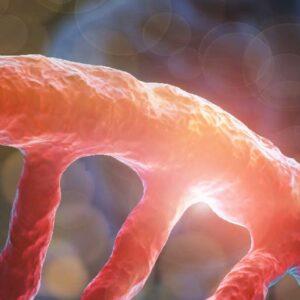Classic glucose transporter type 1 deficiency syndrome (GLUT1-DS) refers to a clinical picture described by De Vivo in 1991 with therapy-resistant epilepsy and epileptic encephalopathy beginning in infancy, severe developmental disability, acquired microcephaly, and a complex movement disorder with muscular hypotonia or spasticity, ataxia, dystonia, or chorea. The phenotypic GLUT1-DS spectrum also includes paroxysmal activity-induced dyskinesia and epilepsy (DYT18) and paroxysmal choreoathetosis with spasticity (DYT9). In 90% of classical GLUT1-DS cases, epilepsy presents within the first two years of life with one of five seizure types: generalized tonic or clonic, myoclonic, atypical absences, atonic, or unclassified. Movement disorders are often exacerbated by fasting, fever, or infection. The prevalence is estimated at 1:90,000. In most cases, Glut1-DS is inherited in an autosomal dominant manner with 90% caused by new variants and only 10% of patients having an affected parent.
GLUT1-DS is caused by pathogenic variants in the SLC2A1 gene, which encodes the glucose transporter of the blood-brain barrier (GLUT1). SLC2A1 consists of 10 exons spanning 35 kb of genomic sequence. Between 81% and 89% of all pathogenic SLC2A1 variants are point mutations, with genomic deletions present in 11-14% of patients. Pathogenic SLC2A1 variants are loss-of-function variants that include frameshift and missense variants with residual protein activity. In particularly severe cases, a complete SLC2A1 allele is missing. There is a genotype-phenotype correlation. Pathogenic missense variants result in a mild to moderate phenotype while nonsense, splice, and frameshift mutations as well as intragenic deletions have been described in moderate to severe phenotypes. Complete genetic deletions result in particularly severe clinical courses. Changes in the SLC2A1 gene are also found in about 10% of all patients with early-onset absence epilepsy.
GLUT1 (solute carrier family 2, facilitated glucose transporter member 1) is an integral membrane protein consisting of 492 amino acids that provides the only transport pathway of glucose across the blood-brain barrier through a pore region. Pathogenic SLC2A1 variants result in hypoglycorrhachia. Therapeutically, a ketogenic diet can be used to bypass the glucose pathway and offer ketones as an alternative energy source.
A neurological diagnosis is possible due to hypoglycorrhachia (decreased glucose concentration in the cerebrospinal fluid, CSF (<60 mg/dl in all cases described so far: <40 mg/dl in >90% of cases; 41-52 mg/dl in ~10% of cases) with normal blood glucose concentration after a 4-hour fast). Lactate can be used as an alternative source of energy and can therefore also be measured at a reduced level in the CSF of some patients.
References
Koch and Weber 2019, Epilepsy Behav 91:90 / Soto-Insuga et al. 2019, Epilepsy Res 154:39 / Di Vito et al. 2018, Epilepsy Behav 79:169 / Yang et al. 2011, Ann Neurol 70:996 / Weber et al. 2011, Neurology 77:959 / Leen et al. 2010, Brain 133:655 / Levy et al. 2010, Mol Genet Metab 100:129 / Mullen et al. 2010, Neurology 75:432 / Suls et al. 2008, Brain 131:1831 / Seidner et al. 1998, Nat Genet 18:188 / De Vivo et al. 1991, N Engl J Med 325:703





















